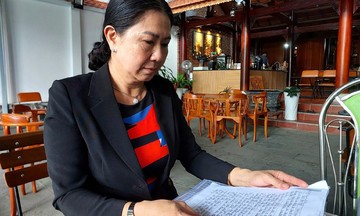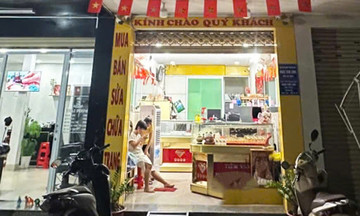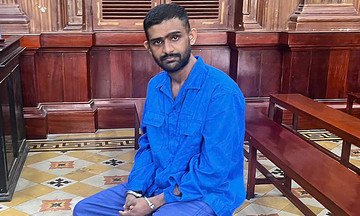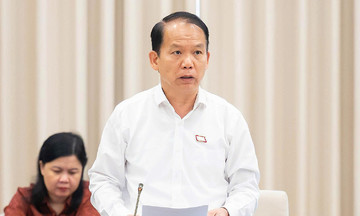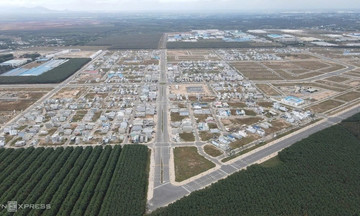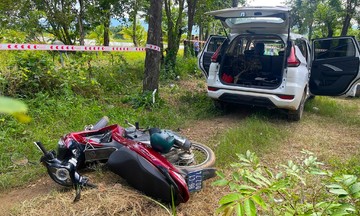On a chilly morning of 11/1/1983, a group of children playing on the slopes of Mount Hoamsan, west of Seoul, stumbled upon what they initially thought was a mannequin. A closer look revealed a horrifying truth: the frozen body of a naked woman lying among fallen leaves.
Police quickly secured the scene. The body showed no signs of physical injury, struggle, or external trauma, leading investigators to suspect poisoning.
Three days later, fingerprints identified the victim as 24-year-old Kim Kyung-hee.
A deadly modeling offer
Four years prior, after her marriage ended, Kim left her two young sons and moved to Seoul, hoping for a fresh start. She found affordable housing in the suburbs and, in November 1982, secured a job at a barbershop in Garak-dong, Seoul. The barbershop also offered sexual services, and Kim's primary role was shaving clients.
Among her clients was a middle-aged man who always carried an expensive camera. He frequently complimented Kim's physique, suggesting she could be a model. When he offered to pay her for a photoshoot, she agreed.
At 9 a.m. on 13/12/1982, Kim waited for him outside the closed barbershop. He proposed taking her to the mountains for a nature-themed shoot. This was the last time Kim was seen alive.
Photos hidden behind a wall
Police questioned Kim's boyfriend, neighbors, and colleagues, including clients at the barbershop. Lee Dong-shik was one of those clients.
When investigators visited Lee's home near the barbershop, he greeted them enthusiastically, introducing himself as a photographer and showcasing his work. His portfolio consisted of portraits of women, none of which initially connected him to Kim.
Detective Seo Gi-man noticed Lee hastily concealing a photograph: another portrait of a young woman, her face obscured. She lay on dry leaves, dressed in a black camisole, striped shirt, brown skirt, and bright red nail polish.
Lee claimed the photo was staged. Although Detective Seo didn't find it more disturbing than Lee's other, sometimes gruesome, photos, he felt uneasy and decided to investigate further. Kim's boyfriend confirmed the clothing belonged to her. A more thorough search of Lee's house revealed 21 more photos of Kim hidden behind a wall, all taken at the same location.
Lee initially claimed he'd left Kim after the photoshoot and assumed she'd committed suicide. Police pointed out the exact match between the position of Kim's body and the leaves in the photos and the crime scene. Lee then changed his story, confessing to accidentally strangling Kim during an argument. He claimed they were lovers and that Kim was stalking and blackmailing him. This, too, proved false. Evidence indicated Kim was poisoned, not strangled.
A deadly plan 'for art'
Hong Soon-taek, a member of the Photographic Artists Association and a professor at Shingu College, made a chilling discovery while examining the 21 photos of Kim. He observed that in some frames, the fine hairs on Kim's body stood erect, indicating she was alive, while in others, they lay flat. This allowed the photos to be sequenced, revealing that Kim died between the 15th and 16th photos.
A search of Lee's home uncovered potassium cyanide, the poison found in Kim's body, and a notebook containing the names of about 20 women.
Police concluded that Lee lured Kim to the mountain under the guise of a photoshoot. The December cold provided the perfect cover for his poisoning plan. He gave Kim what he claimed were "cold pills," pretending she might catch a cold during the shoot. The pills were laced with potassium cyanide. As the poison coursed through Kim's veins, Lee meticulously documented her agonizing final moments. After her death, he removed her clothes and continued photographing.
 |
Illustration of the case by Yoo Doo-ho/ *The Korea Herald*. |
When confronted with the truth, Lee excitedly proclaimed, "the image of a person dying is art." He called the photographs his artistic pursuit, his ultimate desire.
The double life of a killer photographer
Lee Dong-shik, a small, married man with three children, lived in a newly built low-rise apartment complex in Garak-dong, eastern Seoul. He concealed a dark past as a convicted criminal.
Orphaned at 6, Lee was born in 1940. He moved to Seoul at 14, surviving on the streets by scavenging for food. At 23, he was convicted of theft, with two subsequent theft convictions in later years. After his release, Lee became a plumber, seeking a new beginning. It's unclear when his passion for photography developed. Despite lacking formal training, he spent several months' wages on a high-end Japanese camera.
Lee displayed talent by winning an award in a prestigious photography competition for a haunting image of a dying chicken. This marked his first major achievement but also planted a disturbing idea: death as a compelling artistic subject, and capturing its true essence as a path to photographic success.
In 1982, Lee earned a place in the Korean Photographic Artists Association, a prestigious club for established photographers, solidifying his transition from amateur enthusiast to artist. By the end of 1982, he put his murderous plan into action.
The 1983 investigation revealed Lee had previously defrauded and raped a young woman. He also forced his wife to reenact pornographic scenes from Japanese magazines and films.
Lee was sentenced to death and hanged on 27/5/1986.
 |
The January 21, 1983, edition of *Chosun Ilbo* featuring a photo of murder suspect Lee Dong-shik and a detailed article about the crime. Photo: *Chosun Ilbo News Library* |
Was Kim Lee's first victim? Were all the photographs by Lee, a man obsessed with capturing death, staged except for Kim's? Police deemed it unlikely and intended to investigate the names in Lee's notebook and his other gruesome photographs. However, the investigation ended there.
A 1983 article on Lee's case published uncensored photos of Kim's dying moments with the caption, "This is the picture he wanted to take." This article and others are the source of the images of Kim's death still circulating online.
In *Photography and Fetishism*, Japanese photographer and critic Kotaro Iizawa explains, "Death has long been a prevalent theme in photography, and when combined with sexual elements, it creates an even more powerful impact on the viewer." He argues that the widespread media coverage of Lee's crime stemmed from a human fascination with shocking content.
Publishing graphic images of victims is now prohibited in many countries, including South Korea, due to privacy protections. However, the public's morbid curiosity hasn't disappeared; it has simply migrated online.
Tue Anh (according to *Korea Herald*)



